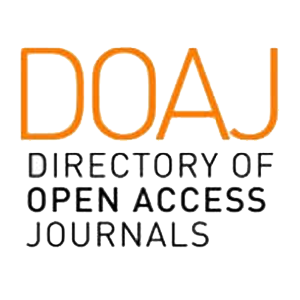El efecto de la educación en el crecimiento económico: el caso de México en el periodo 1996-2016
Abstract
The objective of the research is to determine the type of relationship that exists between spending on education and economic growth for the Mexican economy in the 1996-2016 period. For the theory of human capital, the relationship education-growth is direct and clear, however, from an empirical perspective, in the developing countries are present certain characteristics that allow to infer a negative correlation or the inexistence of this effect. To do this, the causality test was determined in the sense of Granger and the evidence registers independence between the two variables analyzed, so that the approach of human capital is not universal.
Downloads
References
Aghion. P. y P. Howitt (2009). The economics of growth. Massachusetts: The MIT press.
BM (2018). The Human Capital Project. Washington: Banco Mundial. Barro, R. (1999). “Determinants of economic growth: implications of the global evidence for Chile”. Revista Cuadernos de Economía, vol. 36, núm. 107, pp. 443-478.
Bourdieu, P. (1987). “Los tres estados del capital cultural”. Revista Sociológica, vol. 2, núm. 5, pp. 11-17.
Bouznit, M. (2012). “Politiques educatives et croissance conomique: etude analytique et econometrique pour le cas de l’Algerie”. Recuperado de http://www.enssea.net/enssea/moultakayat/2012/polpub/ 2012-34.pdf
Bracho, T. (1990). “Capital cultural: impacto en el rezago educativo”. Revista Latinoamericana de Estudios Educativos, vol. 20, núm. 2, pp. 13-46.
Colorado, A. (2009). “El capital cultural y otros tipos de capital en la definición de las trayectorias escolares universitarias”. X Congreso Nacional de Investigación Educativa.
Cortés, O. (2015). “Evaluación del gasto educativo en México”. Centro de Estudios Sociales y de Opinión Pública, Reporte de investigación núm. 9.
De la Fuente, A. y A. Ciccone (2002). “Le capital humain dans une économie mondiale fondée sur la connaissance”. Recuperado de https:// hip.lisboa.ucp.pt/edocs/cde/2003_2765.pdf
Delajara, M. et al. (2018) El México del 2018. Movilidad social para el bienestar. México: Centro de Estudios Espinosa Yglesias.
Diop, A. (2011). Politique de recrutement des enseignants non fonctionnaires et qualité de l’éducation de base au Sénégal: quels enseignements vers l’Education Pour Tous (EPT)?. Tesis doctoral, Université de Bourgogne de Francia.
Domar, E. (1946). “Capital Expansion, Rate of Growth, and Employment”. Revista Econometrica, vol. 14, núm. 2, pp. 137-147.
Farkas, G. (2018). “Family, Schooling, and Cultural Capital”. En Schneider, B. (Ed.). Handbook of the Sociology of Education in the 21st Century. Suiza: Springer.
Galindo, M. y M. Méndez (2010). “Adam Smith on Education and economioc growth: direct and indirect effects”. En Galindo, M. y C. Nardi. Issues in Economic Thought. Nueva York: Nova Science Publishers.
Granger, C. (1969). “Investigating causal relations by econometric models and cross-spectral methods”. Econometrica, vol. 37, núm. 3, pp. 424-438.
Greene, W. (2003). Econometric analysis. Nueva Jersey: Pearson Educación.
Gujarati, D. y D. Porter (2009). Econometría. México: McGraw-Hill.
Hanushek E. y D. Kimko (2000). “Schooling, labor-force quality, and the growth of nations”. The American Economic Review, vol. 90, núm. 5, pp. 1184-1208.
Hanushek, E. y L. Woessmann (2012). “The economics of international differences in educational achievement”. Journal of Economic Growth, vol. NE, núm. 17, pp. 267-321.
Harrod, R. (1939). “An Essay in Dynamic Theory”. The Economic Journal, vol. 49, núm. 193, pp. 14-33.
INEGI (2017). Anuario estadístico y geográfico de los Estados Unidos Mexicanos 2017. México: Instituto Nacional de Estadística y Geografía.
Jaoul, M. (2004). “Higher education, causality and growth: a comparison of France and Germany before the Second World War”. Compare: A Journal of Comparative and International Education, vol. 34, núm. 1, pp. 117-133.
Khan, Z. et al. (2011). “Relationship between Education and Economic Growth in Pakistan: A time series analysis”. Journal of International Academic Research, vol.11, núm.1, pp. 27-32.
Kobzev, S. et al. (2018). “The Impact of Education on Economic Growth: The Case of India”. Acta Universitatis Agriculturae et Silviculturae Mendelianae Brunensis, vol. 66, núm. 1, pp. 253–262.
Lauder, H. (2015). “Human capital theory, the power of transnational companies and a political response in relation to education and economic development”. Compare: A Journal of Comparative and International Education, vol. 45, núm. 3, pp. 490-493.
Laval, C. (2004). La escuela no es una empresa. Madrid: Paidós.
Mankiw, G. et al. (1992). “A Contribution to the Empirics of Economic Growth”. The Quarterly Journal of Economics, vol. 107, núm. 2, pp. 407-437.
Marcenaro, Óscar. y L. López (2014). “El efecto del capital cultural sobre el rendimiento educativo diferencial por género”. Recuperado de https://idus.us.es/xmlui/bitstream/handle/11441/41053/Pages%20 from%20Investigacion_Genero_14-2-12.pdf?sequence=1
Marginson, S. (2017). “Limitations of human capital theory”. Studies in Higher Education, vol. 44, núm. 2, pp. 287-301.
Mayia, F. et al. (2004). “Human capital theory: implications for human resource development”. Journal Human Resource Development International, vol. 7, núm. 4, pp. 545-551.
Monteils, M. (2014). “The analysis of the relation between education and economic growth”. Compare: A Journal of Comparative and International Education, vol. 34, núm. 1, pp. 103-115.
OCDE (2018). A Broken Social Elevator? How to Promote Social Mobility. Overview and main findings. Paris: OCDE.
Okacha, R. (2015). Capital humain, education et croissance économique. Tesis de doctoral, Université Abou Bekr Belkaid de Argelia.
Pfaff, B. (2008). Analysis of integrated and cointegrated time series with R. Nueva York: Springer.
Piketty, T. (2014). El capital en el siglo XXI. Buenos Aires: Fondo de Cultura Económica.
Rajimon, J. (2010). “La economía y la función de producción en educación”. Revista Visión de Futuro, vol. 13, núm. 1, pp. 201-215.
Robson, K. (2009). “Teenage Time Use as Investment in Cultural Capital”. En Robson K. y C. Sanders (eds.). Quantifying Theory: Pierre Bourdieu. Toronto: Springer Netherlands.
Sanders, C. y K. Robson (2009). “Introduction: Approaches to Quantifying Bourdieu”. En Robson, K. y C. Sanders (eds.). Quantifying Theory: Pierre Bourdieu. Toronto: Springer Netherlands.
Sieben, S. y C. Lechner (2019). “Measuring cultural capital through the number of books in the household”. Journal Measurement Instruments for the Social Sciences, vol. 2, núm. 1, pp. 1-6.
Simpson, C. (2017). “The acquisition of cultural capital. Gabriellla`s Story”. En Simpson, C. Experiences of Women of Color in an Elite US Public School. Suiza: Springer.
Solow, R. (1956). “A Contribution to the Theory of Economic Growth”. The Quarterly Journal of Economics, vol. 70, núm. 1, pp. 65-94.
Stock, J. y M. Watson (2012). Introducción a la Econometría. Madrid: Pearson Educación.
Throsby, D. (1999). “Capital cultural”. Journal of Cultural Economics, vol. 23, núm. 3, pp. 3–12.
Valdenaire, M. (2011). “Essais en économie de l’éducation”. École des Hautes Études en Sciences Sociales en Francia (Tesis de doctorado).
Verdú, A. et al. (2014). “Capital cultural y social: sus efectos en el conocimiento financiero según PISA 2012”. Ministerio de Educación, Cultura y Deporte, documento de trabajo.
Weil, D. (2006). Crecimiento económico. Madrid: Pearson Educación.
Wooldridge, J. (2010). Introducción a la econometría Un enfoque moderno. México: Cengage Learning Editores.














